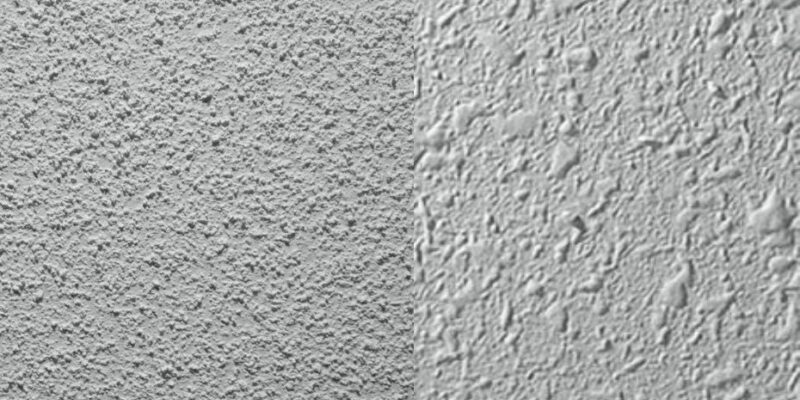Knockdown texture décor is a popular wall finish that adds texture and dimension to the walls of your home. It is applied using a sprayer and then ‘knocked down’ with a trowel or sponge. The result is a naturally textured wall surface that adds visual interest to any room. By understanding how knockdown texture décor works, you can decide if it is the right choice for your home’s walls. We will highlight the relevance of the knockdown texture décor in homes or commercial properties in modern architecture.
A Look at the History of Knockdown Texture Décor in Building Construction
The knockdown texture décor is believed to have originated in the US in the mid-20th century. In the early days, the texture was used primarily as a way to hide imperfections in the wall surface, as it was difficult to achieve perfectly smooth drywall finishes at the time. The texture was also used to create a more interesting visual effect on walls, particularly in homes with more rustic or country-style décor.
In the 1970s and 1980s, the knockdown texture became a mainstream interior wall finish. This was due in part to the development of new drywall finishing tools and techniques that made it easier to achieve a consistent, high-quality finish. The knockdown wall texture was also influenced by the rising popularity of Spanish-style architecture in the Southwestern United States, which often featured textured stucco finishes on exterior walls.
The Pros and Cons of Using Knockdown Texture Décor in Building Construction
Knockdown texture décor is a popular choice for modern building construction. It provides a unique look that can be difficult to achieve with other types of décor. However, it is important to consider the pros and cons of using this type of décor before committing to it.
Pros
- Hides Imperfections – One of the primary benefits of knockdown texture is that it can hide imperfections on walls and ceilings. This texture can help to cover up uneven surfaces, cracks, or other imperfections that would be visible with a smooth finish.
- Easy to Apply – Knockdown texture is relatively easy to apply. Professionals do not need highly specialized equipment to apply this texture. Also, it can be done rather quickly.
- Versatile – Knockdown texture can be customized to fit different design styles. Depending on your preferences, you can choose to have a light or heavy texture, and it can be applied to walls or ceilings.
Cons
- Hard to Repair – Knockdown texture can be difficult to repair if it becomes damaged. It is challenging to match the existing texture, resulting in an uneven or mismatched finish.
- Dust and Dirt – The knockdown walls’ texture can also make cleaning more challenging. Dust and dirt can collect in the crevices, making it harder to maintain a clean and tidy appearance.
- Outdated – One of the most significant downsides of knockdown texture is that it can be seen as outdated. While it was popular in the past, some people may view this texture as old-fashioned or not in line with current design trends.
Summary
Knockdown texture has been a popular choice for walls and ceilings for many years, and it continues to be a suitable design choice in modern building construction. While some people may view it as outdated, knockdown texture has several benefits, including its ability to hide imperfections, ease of application, and versatility. However, it is essential to consider the downsides of knockdown texture, such as its challenging repair process and the difficulty in maintaining a clean and tidy appearance. Ultimately, the decision to use knockdown texture in building construction will depend on personal preferences and the desired design style. Consulting with a professional contractor or designer can help homeowners make the best choice for their home’s interior design.
